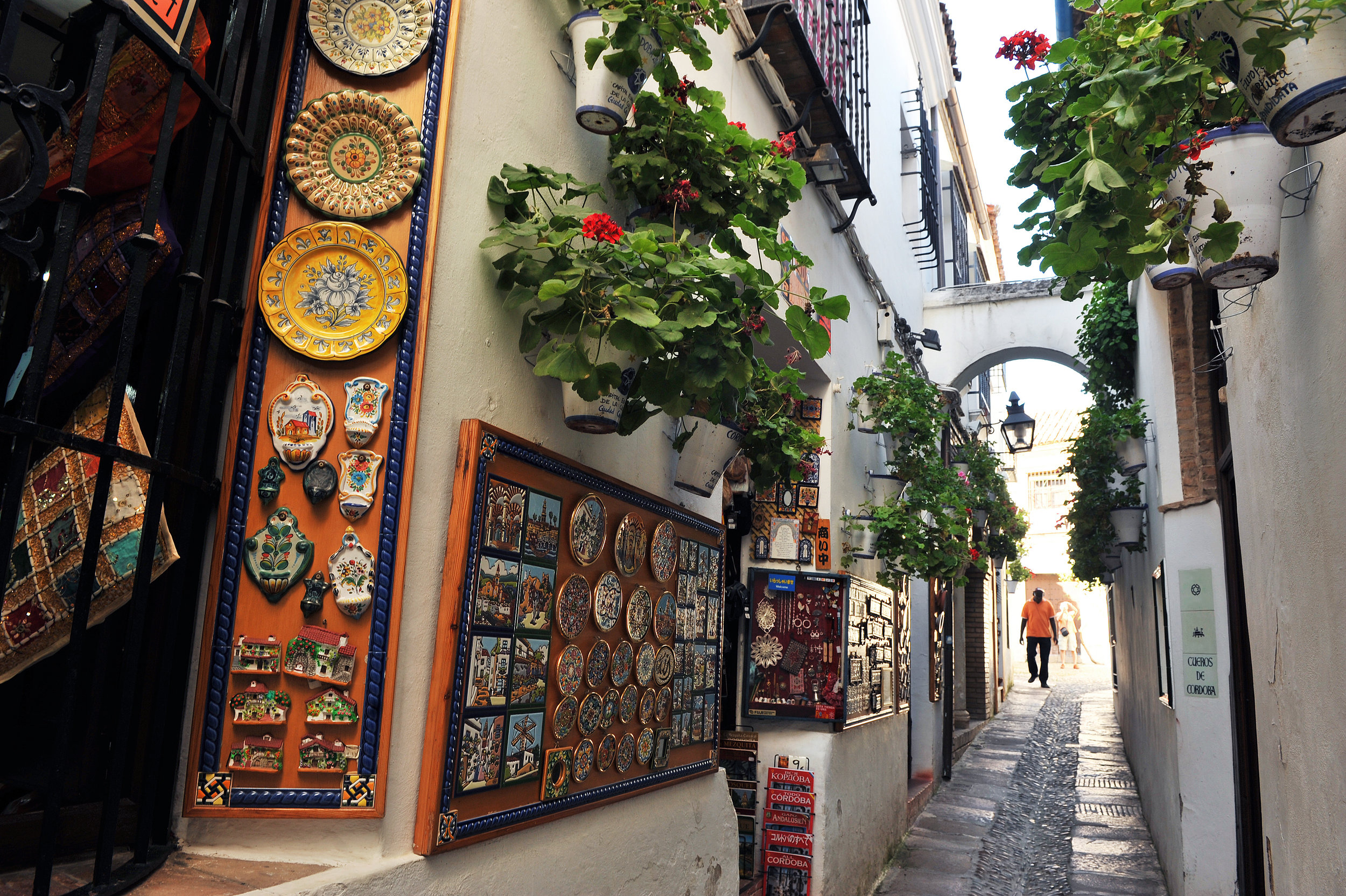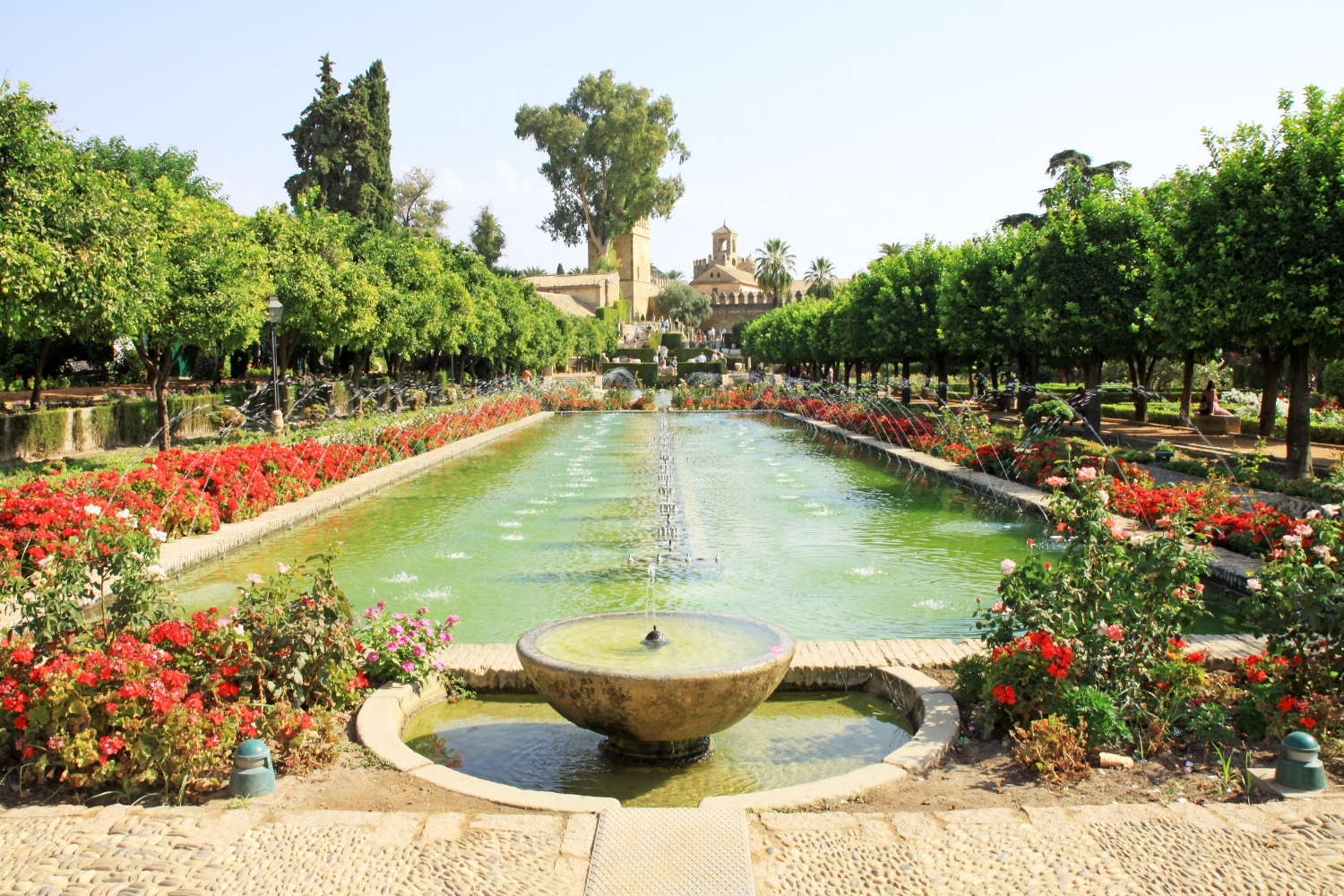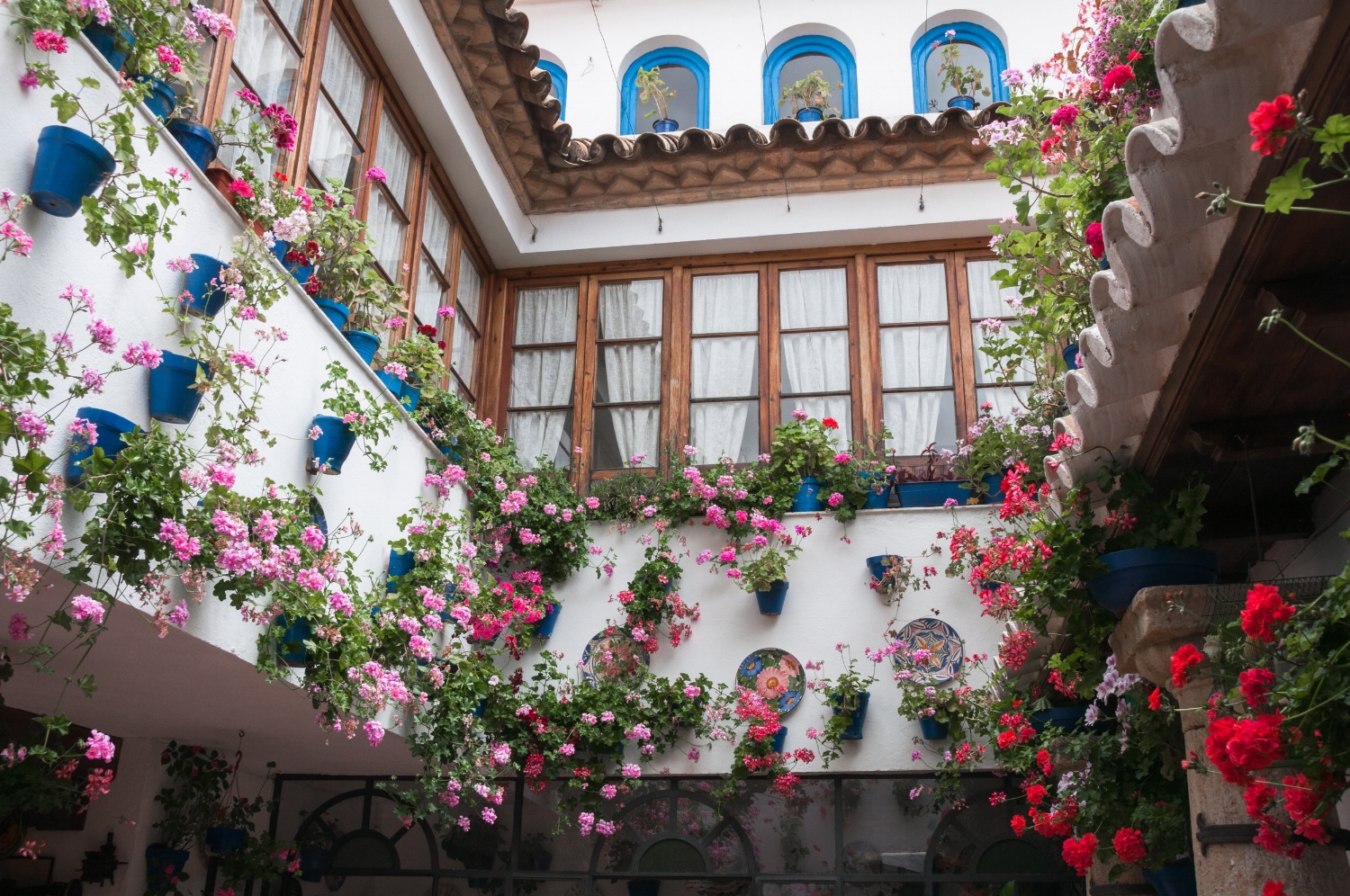
Puente Romano
The Roman bridge of Córdoba is a bridge in the historic center of Córdoba, originally built in the early 1st century BC across the Guadalquivir River, though it has been reconstructed at various times since. Most of the present structure dates from the Moorish reconstruction in the 8th century.

View of the Bell Tower of the Mezquita
Built under the rule of Abd al-Rahman III., the tower originally was a minaret. After the Christians reconquered the city in 1236, the minaret - as well as the Mezquita - was hallowed and converted into a bell tower.

Another view of the Bell Tower from the Judería
The Bell Tower of the Mezquita can be seen from various places throughout the city, but the most picturesque views are from the winding streets of the Judería, the oldest section of Córdoba.

Inside the Mezquita
The Mezquita (Mosque-Cathedral of Córdoba) is the most important monument of all the Western Islamic world, and one of the most amazing in the world. The evolution of the “Omeya” style in Spain is resumed in the history of the Mezquita, as well as other styles such as the Gothic, Renaissance and Baroque of the Christian architecture. The interior space consists of a forest of columns and red and white arches giving a strong chromatic effect.

West Facade of the Mezquita

Catholic alter inside the Mezquita
When Christians reconquered Córdoba, they built a Catholic cathedral, completed in 1236 in the heart of the Great Mosque. The the entire building is administered by the local Church authorities and only Christian worship is allowed inside.

Contrast of the Moorish and Christian influences
Here you can see both the Catholic alter as well as the Moorish arches.

Streets scenes from the Judería
Córdoba's old Jewish quarter consists of a fascinating network of narrow lanes and small stores, jewelery shops, and restaurants. One can get lost quite quickly, but eventually you will find yourself at one of its many entrances.

Streets of the Judería during festivals
During various festivals in the spring, the streets of the Judería are decorated with festive items.

Alcázar de Córdoba
The Alcázar has always been an important place in Córdoba because of its location right next to the Guadalquivir River. It used to be the residence of Roman governors and Moorish caliphs, and in 1328 it became the home of the Spanish kings when they were in residence in Córdoba. The Alcazar, features a castle, extensive gardens, and a moorish bathhouse.

View of the Alcázar gardens from above

Festival de los Patios
Córdoba is famous for it’s courtyards, and once a year during the festival de los patios cordobeses, private houses all over the city open up their courtyards to the public for 2 weeks in competition.

Festival de los Patios

Facultad de Filosofía y Letras
This is one of the entrances to the Facultad de Filosofía y Letras, home to the PRESHCO offices and classrooms.














